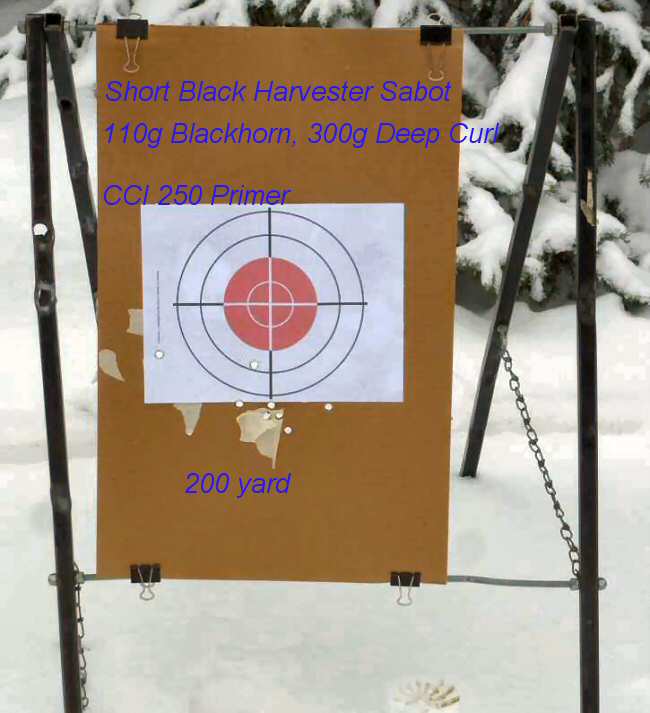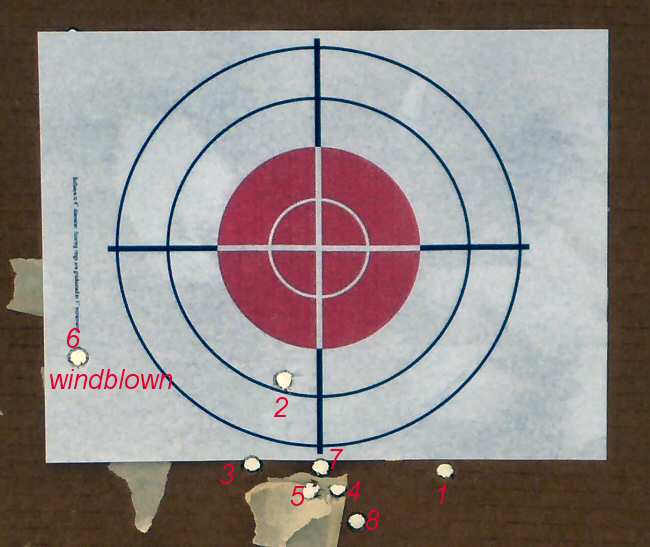- Joined
- Dec 29, 2007
- Messages
- 4,946
- Reaction score
- 3,106
This morning i planned to go fishing, but it was -3. Also, i was curious to see if the old diesel, loaded with all my shooting paraphernalia, would start. He was just fitted with a whole new set of glow plugs. Well, i moved the rifle, powder, and a clean target from the shop to the truck. The original plan was to go fishing, so the truck wasn't plugged in. Happily, he started right up, and after the windshield defrosted, we headed for the hills.
The load was 110g Blackhorn, 300g Deep Curl, crush rib sabot, CCI 250 primer. The rifle was the Dream Season. The range was 200 yard. The temperature through the shooting, was right at zero. In the beginning, the air was moving which i could feel, and it also moved my breath different directions. However, the moving air wasn't really a breeze, just gentle moving air. The first two shots were some high. The first was from a cold clean barrel. The second shot was from a barrel with one shot through it. The loading pressure using the crush rib sabot wasn't much, but seemed it was "enough".
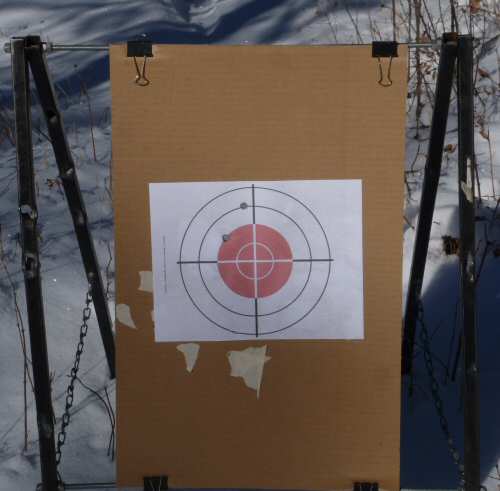
However, when i loaded the third shot, i felt very very little resistance whilst shoving the bullet 'home'. The large change is loading resistance was very noticeable, and actually kinda surprising. This third shot went a way lower than the first two. The fourth shot loaded very easy, just like the third. The fifth shot loaded the same as the third, and the fourth. These easy loading shots made me wonder if i shouldn't be using a more tighter sabot, but they sure all hit in the same area, albeit, a lot lower than the first two shots.
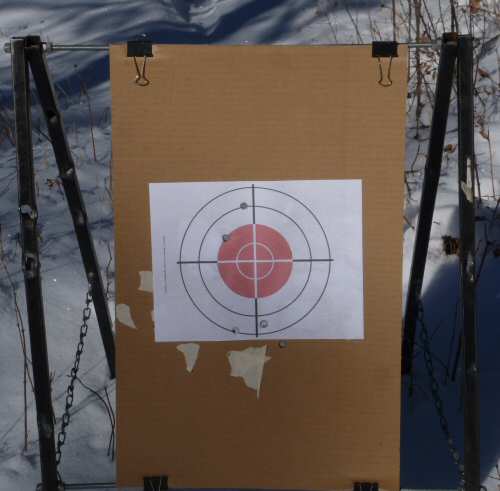
What i wonder/wondered is if the bore expanded because it warmed, or if the Blackhorn residue acted as a 'lubricant', or both. At any rate the 'loose' load sure made for a different point of impact, and the force to put the bullet on the powder didn't seem it was enough.
Then a swirly breeze came, and i knew there was no use to shoot any more, but i did shoot twice more. The smoke from the sixth shot blew straight left, and that is where the bullet hit--a way left. The smoke from the seventh shot blew to the right.
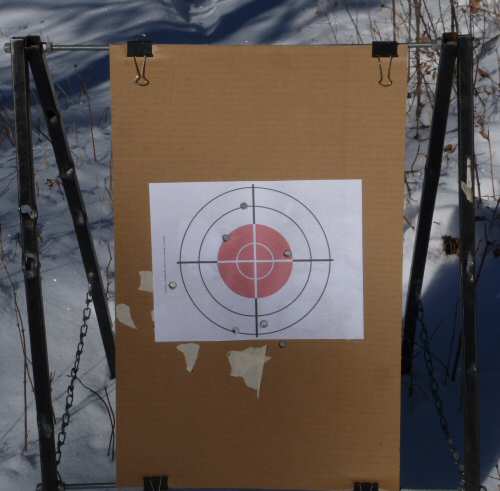
Then i went home; then i went fishing. It warmed up real nice--36 degrees. All i caught was 2 itty bitty perch, about the size of a goldfish.
The load was 110g Blackhorn, 300g Deep Curl, crush rib sabot, CCI 250 primer. The rifle was the Dream Season. The range was 200 yard. The temperature through the shooting, was right at zero. In the beginning, the air was moving which i could feel, and it also moved my breath different directions. However, the moving air wasn't really a breeze, just gentle moving air. The first two shots were some high. The first was from a cold clean barrel. The second shot was from a barrel with one shot through it. The loading pressure using the crush rib sabot wasn't much, but seemed it was "enough".

However, when i loaded the third shot, i felt very very little resistance whilst shoving the bullet 'home'. The large change is loading resistance was very noticeable, and actually kinda surprising. This third shot went a way lower than the first two. The fourth shot loaded very easy, just like the third. The fifth shot loaded the same as the third, and the fourth. These easy loading shots made me wonder if i shouldn't be using a more tighter sabot, but they sure all hit in the same area, albeit, a lot lower than the first two shots.

What i wonder/wondered is if the bore expanded because it warmed, or if the Blackhorn residue acted as a 'lubricant', or both. At any rate the 'loose' load sure made for a different point of impact, and the force to put the bullet on the powder didn't seem it was enough.
Then a swirly breeze came, and i knew there was no use to shoot any more, but i did shoot twice more. The smoke from the sixth shot blew straight left, and that is where the bullet hit--a way left. The smoke from the seventh shot blew to the right.

Then i went home; then i went fishing. It warmed up real nice--36 degrees. All i caught was 2 itty bitty perch, about the size of a goldfish.





